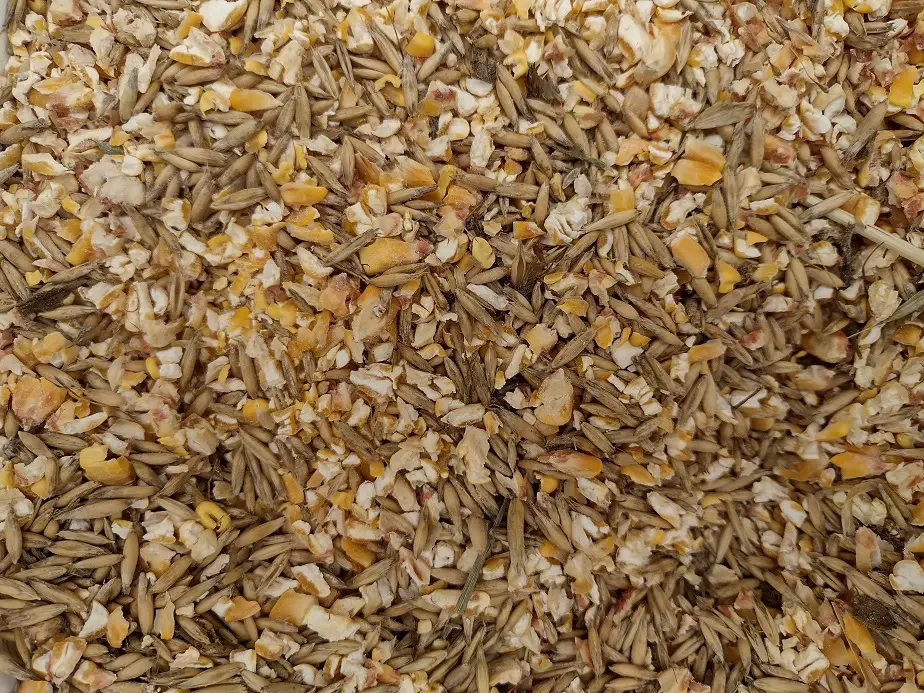We’ve been trying different grains as pig feed to see how it affects the growth and health of our pigs, the quality of pork, and my budget.
The best grains for pigs are corn, barley, oats, rye, and wheat. Corn is slightly cheaper but low in protein and vitamins. Oats improve pig’s gut health. Barley is highly digestible and higher in protein than corn and is said to improve pork marbling. Rye is protein-rich and is said to calm pigs down.
When feeding a lot of one thing, it has a big impact on the health of an animal and the flavor of the meat. Here’s what I’ve noticed.
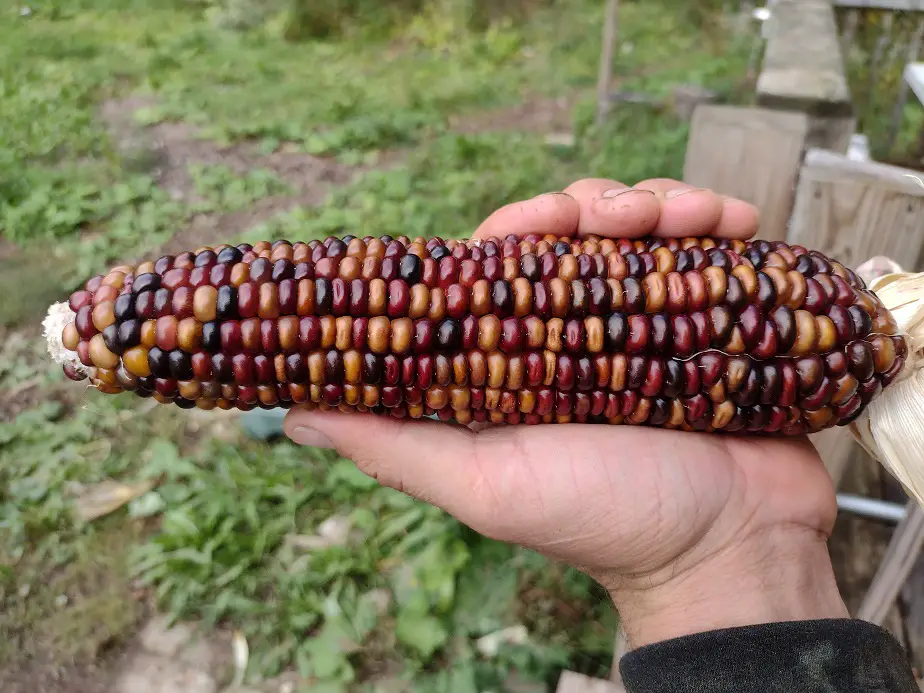
Feeding Corn to Pigs
Corn is the most common grain in pig feed, mainly because it’s the most productive grain. That makes it cheaper than the other grains. Plus, the government is still incentivizing farmers to grow more corn, which works to further keep prices down. That’s why most pig feeds are mostly corn currently.
The issue with corn is that it’s low in vitamins, minerals, and protein. It has less in all three categories than other grains, except for one nutrient, selenium. That’s good because selenium is necessary for skeletal muscle to develop properly.
Too little selenium causes White Muscle Disease, which causes paralysis or partial paralysis, and is usually treated by adding extra selenium to the diet. So, corn can help in that regard.
Corn also has a hard-to-digest outer shell, which is why feed corn is usually finely ground. But, corn is full of starchy energy. Corn is the benchmark of energy value (useable calories) for a grain. Other feed grains are measured against corn’s energy value.
The low protein levels of corn are what a lot of pork producers don’t like. Field corn usually comes in between 6 and 8 percent protein. It’s not a full-profile protein, It’s lacking 3 key proteins for pigs: lysine, methionine, and tryptophan. Lysine is the most significant growth-limiting protein for pigs.
The main type of protein structure in corn is called prolamins, or zeins. Prolamins are basically devoid of lysine and tryptophan, and quite low in methionine. Most grains are low in these, but corn is by the lowest. That’s why specialty pig producers are looking at oats, rye, barley, or specialty heirloom corn.
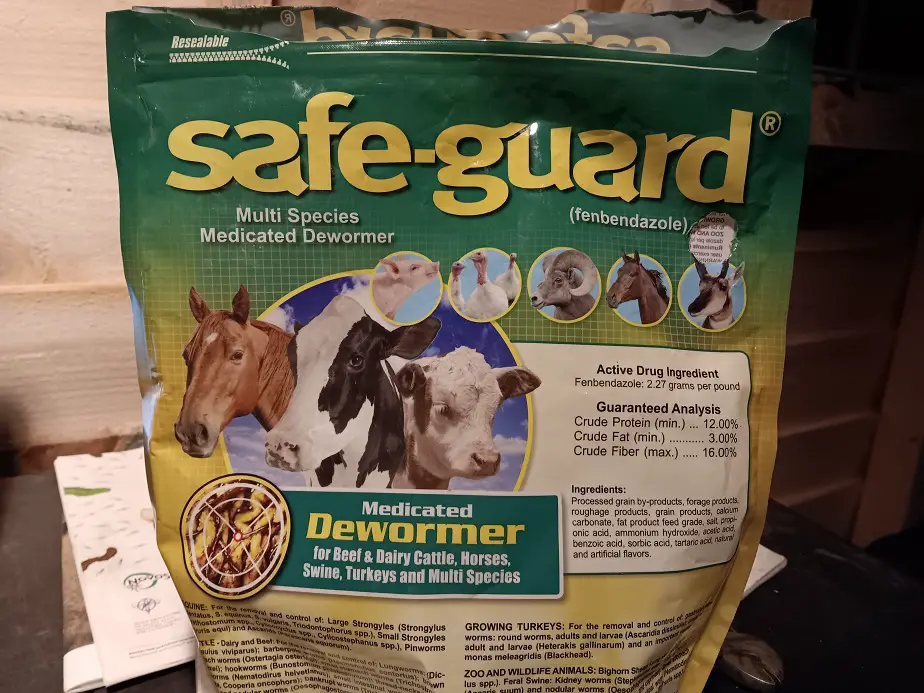
One thing you need for pigs, no matter your raising system, is a parasitic worm treatment. The best swine dewormer is Fenbendazole. It’s known by the brand name Safeguard. Safeguard is available as a medicated corn/alfalfa pellet. It’s the only way I can worm my pigs since they won’t stand still for an injection of Ivermectin. It’s easy and cheap.
- There is a stronger pellet for swine only. Here it is on Amazon
- There is a weaker pellet for general barnyard livestock, including swine. Here it is on Amazon.
I use the multi-species version because it’s what’s available in my local store and I can use it for my chickens too. It’s the most effective swine wormer and the easiest to administer. I use it on all weaned piglets and adults twice a year. Don’t go without it.
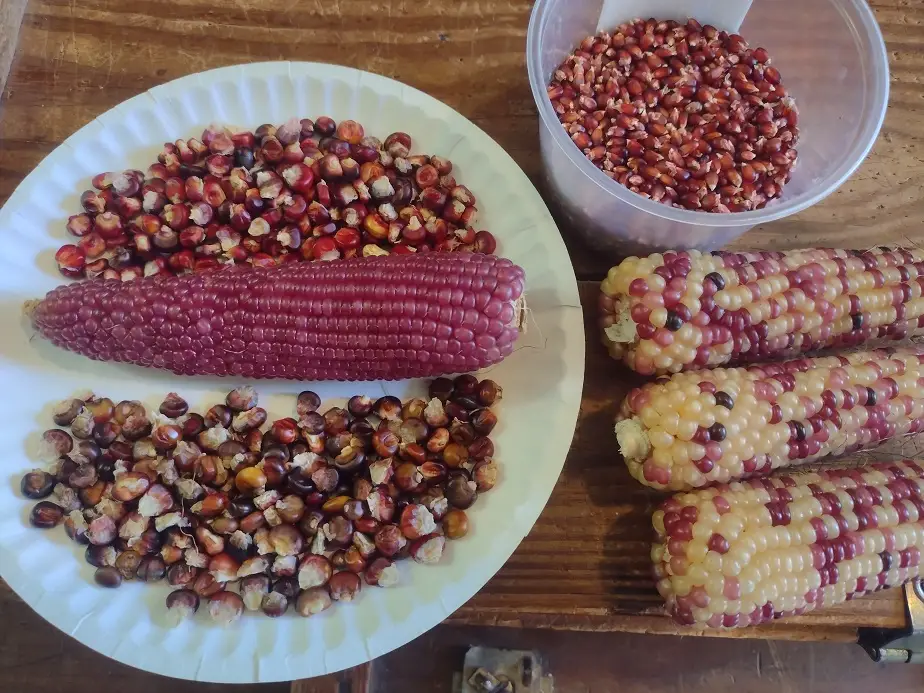
Most heirloom corn is higher in protein, minerals, and vitamins, and slightly lower in calories than the standard No. 2 Yellow Dent Corn. Corn is hard to replace because that’s the vast majority of what’s grown. Personally, we feed corn but are growing our own higher-protein, higher-vitamin variety.
Like all grains, corn benefits greatly from fermenting. It adds to the protein content, boosting it up to 45 percent higher, and greatly increases the lysine, methionine, and tryptophan content. It also adds significant vitamin content to grains. Just something to consider.
I have an article on fermenting grains for pigs. Here’s a link to it.
Corn is known to harden the fat on a pig. Corn-fed pork fat contains more saturated fats. Saturated fat doesn’t cook out as easily as unsaturated fat, so it’s said to be a little harder to overcook or cook dry.
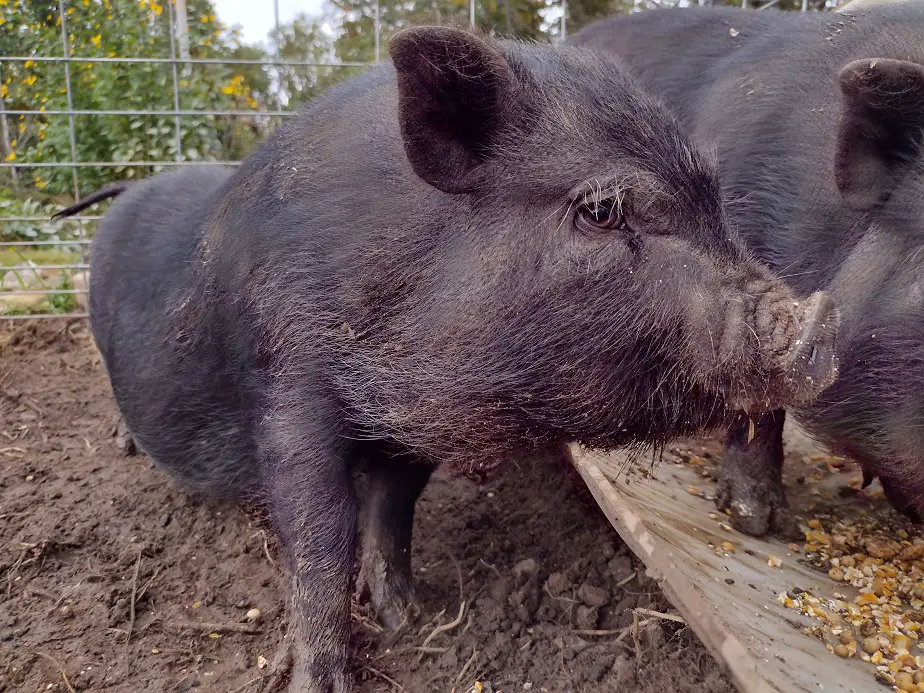
Feeding Barley to Pigs
Barley is a nutritionally desirable grain for pigs. It has 50 percent more protein than corn, including significantly higher amounts of Lysine, Methionine, and Tryptophan. It has more fiber, which some view as good, and it has about 90 percent feed value of corn.
Barley is also 50 to 100 percent higher than corn in most beneficial minerals.
A ground or fermented barley is much more of a proper feed ingredient than any corn for pigs, but it’s not very common. There’s just not much grown. It used to be more common, but the government incentives for growing corn came along.
I only know one guy who feeds his pigs barley. He is a world-renowned pastured pig farmer. He has said that barley was a key in getting not only healthier, good-growing heritage pigs, but also in achieving pork with the highest grade of marbling. He also said it was hard to convince a farmer to grow it.
I have heard it a few times that barley can improve the marbling quality in pork. If I could get barley, I’d use at least some for my pigs.
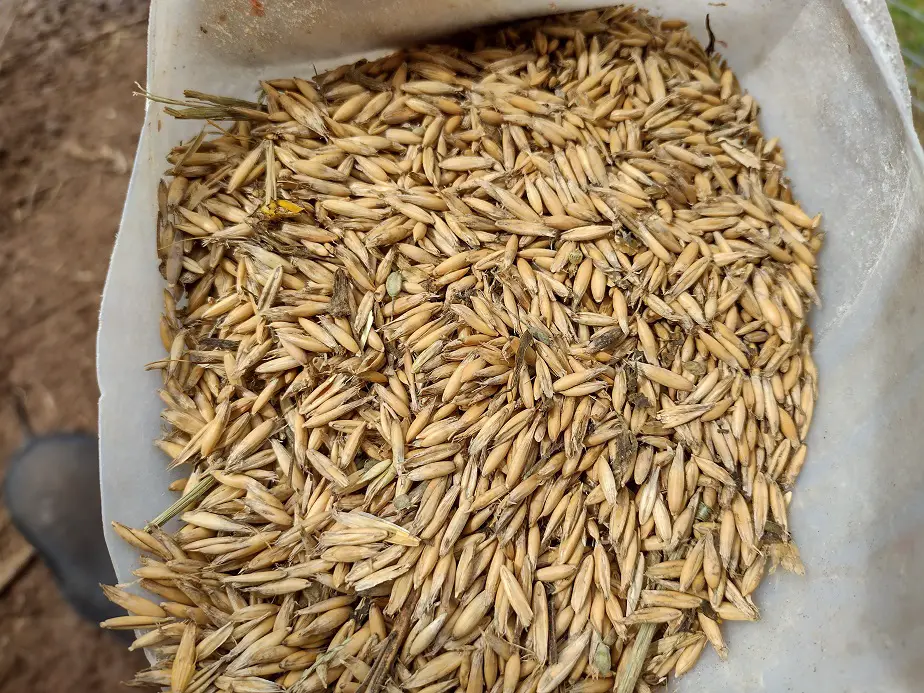
Feeding Oats to Pigs
Oats are an amazing pig feed. They are associated with better gut health, lower numbers of sick and dead piglets, lower numbers of intestinal parasites, and are particularly beneficial to gestating sows. Oats (with the hulls) are a high-fiber grain.
Oats (with the hulls) have about 85 percent of the energy value of corn.
The fiber content in oats results in fewer calories per pound. But, that’s how it improves gut health. Oats have been extensively shown to greatly reduce or do away with diarrhea in weaning and weaned piglets.
Oats have higher protein levels than corn, usually 10-13 percent, but are still low in lysine. Once again, fermenting them will greatly increase that. Oats in pig feed are less common than corn but still fairly common. They cost about the same, usually 10% more per pound from the farmer.
We feed our pigs a lot of oats. Feeding dry oats didn’t work too well, a significant portion of the hull and kernel passed right through. I found that soaking them until they swelled helped a lot, and fermenting for 3 days made a huge difference.
Feeding Wheat to Pigs
Wheat is an equal energy feed to corn, pound for pound. Or, at least very close. Wheat usually has 50 to 60 percent more protein than corn. It does have more lysine, methionine, and tryptophan, but it’s still on the low end. Wheat is high in selenium. It’s often included in pig feed in small amounts.
Wheat has about 50% more protein and fiber than corn. Honestly, wheat should be more common in pig feed. There’s just less of it grown for feed. Wheat being high in energy, and protein, it’s a great grain for pigs. It’s also higher in most essential minerals than corn. It’s just a little bit more expensive.
By now, you would be starting to see how low in many nutrients corn really is. That’s why it’s so important with a high-corn diet to offer supplemental vitamins and minerals. Or, a wild or mixed fodder pasture will do the trick.
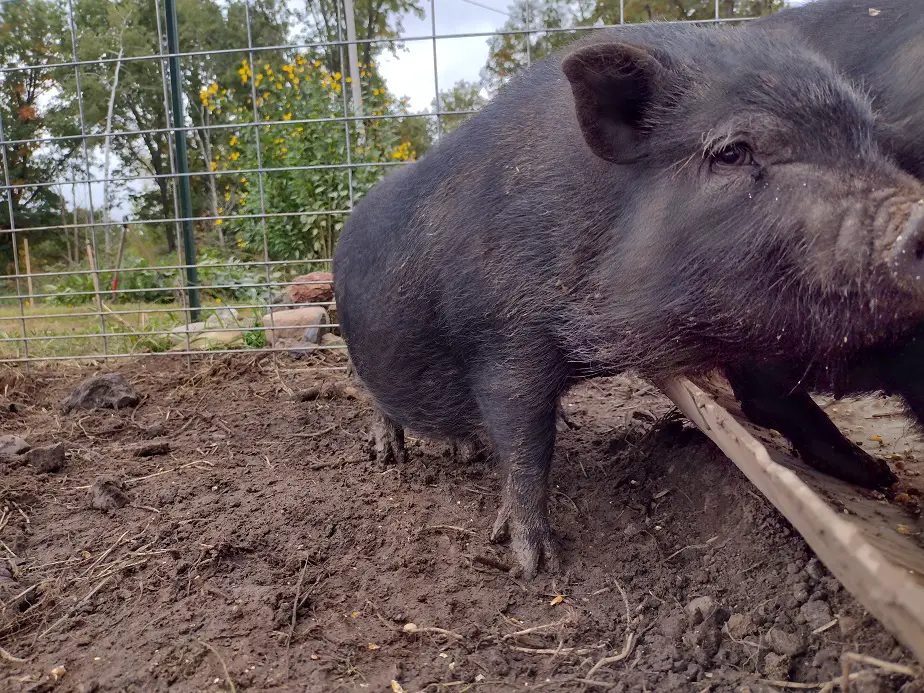
Feeding Rye to Pigs
Rye is a popular pig feed in Europe but is shunned in the US due to being 10 percent less digestible than corn. It’s said that rye has a higher concern than other grains about mold and mold-related toxins, but it doesn’t seem to be a problem in Europe.
Personally, I say it’s a great option, just make sure it stays dry. Rye is another grain that’s been linked to more desirable fat quality in pigs. It’s funny, in the US, feed suppliers warn not to use more than 10 or 20 percent rye in a mix, but in Europe, it’s commonly used for 40 to 60 percent of a pig’s total diet.
I’ve heard that rye-fed pigs tend to be calmer and happier, and that salmonella is less common among pigs fed rye in their ration. Salmonella outbreaks are more common among animals fed a diet high in standard feed corn (yellow dent corn).
Harder grains or grains with more fiber seem to create less of an issue with salmonella. Corn-fed pigs aren’t necessarily problematic, but if kept in a filthy pig pen, it can complicate things. Seriously though, keep the pig pen clean and you shouldn’t ever have a problem.
Indoor pigs always pose a higher risk of disease, unless the pens and pigs are regularly cleaned. The lack of sunlight and fresh air encourages the growth of bad bacteria and increases the chances of a sick pig. But, I’m getting off-track here.
Anyways, those are the more popular, more practical, and more obtainable grains for feeding pigs. Currently, my pigs are getting a mix of corn and oats because those were the two that I could get relatively cheap.
I much prefer a mix of grains to help provide a more naturally varied diet to my pigs.
If you have any questions, feel free to post them in the comment section below. Someone probably has an answer for you.
Related articles:

